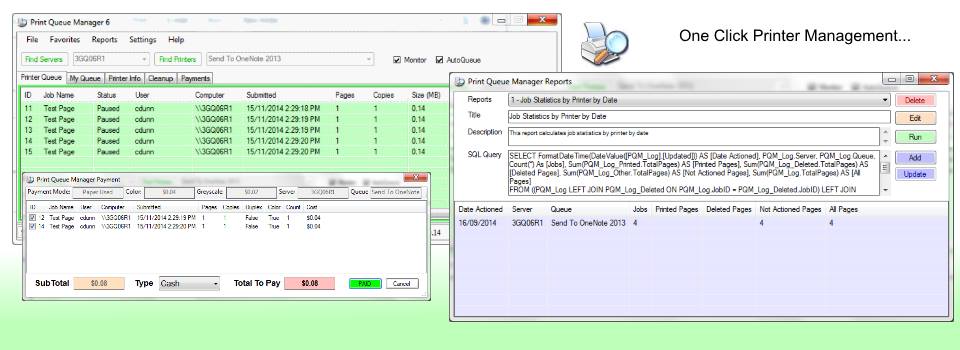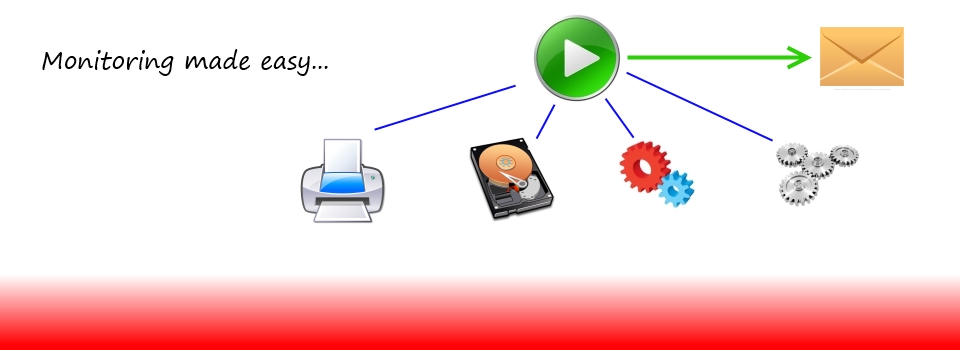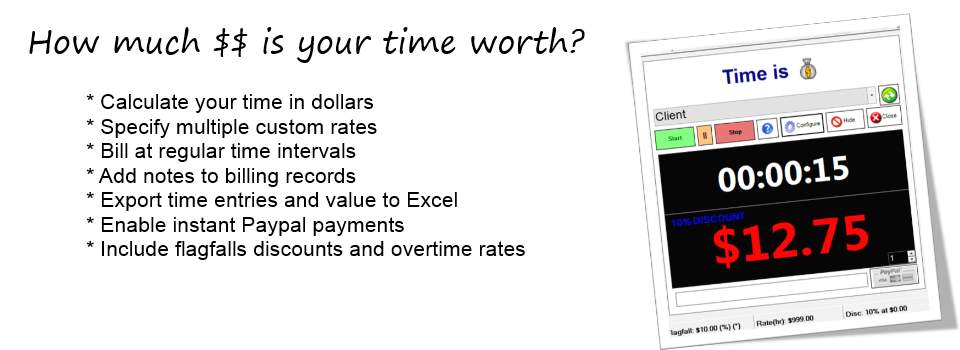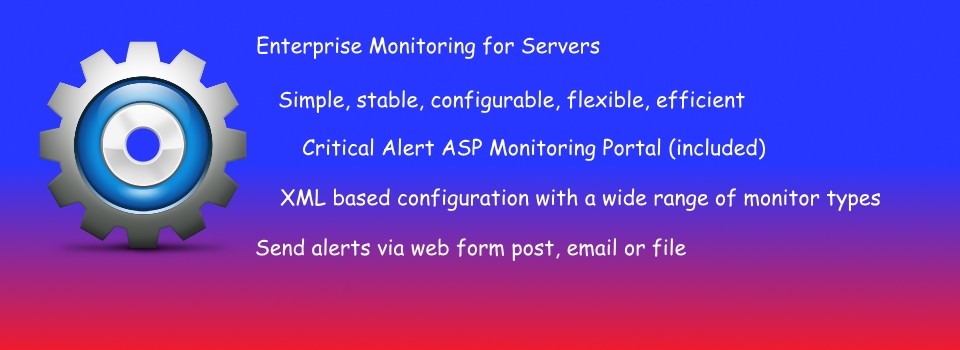Drive Stalker User Guide
- Details
- Category: User Guides
- Published on Saturday, 11 May 2013 00:00
- Written by Christian Dunn
Drive Stalker allows you to automatically check your hard drives. The application can be scheduled using the Windows Task Scheduler to run even if you are not logged onto the computer/server and can send an email notification to advise when issues are identified.
The Free version includes limited features.
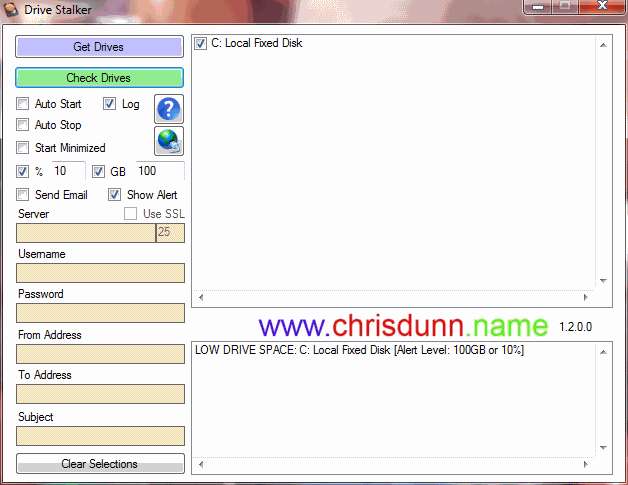
Drive Stalker is easy to use with all features displayed in one interface.
Getting Started
- Click Get Drives to find all drives on the local machine.
- Select the drives you wish to check.
- Specify any options.
- Click Check Drives to check for alerts.
Monitors
- No drive selected
- Low drive space (by % or GB)
- Drive not found
- Drive Status
Features
- AutoStart will automatically list drives and then check drives as soon as the program starts. This is ideal for automatic scheduling.
- AutoStop will close the program 30 seconds after a check is complete. This is ideal for automatic scheduling.
- Log will generate a CSV file with the alert information any time an event occurs.
- Start Minimized will run the program minimized in the taskbar.
- % allows you to specify a minimum percentage level of free space
- GB allows you to specify a minimum gigabyte amount of free space
- Show Alert will send a popup alert to all users on the current machine (on XP requires Messenger service to be enabled).
- Send Email will send an email to the specified email address whenever an alert is raised.
- Use SSL specified secure email transmission.
- Email Server specifies the server used to send email.
- Username and Password are optional and can be used if your email server requires authentication.
- From Address is the address email will come from.
- To Address is the address email will be sent to.
- Subject allows a custom subject to be specified for the email
- You can use "<computer>" in the email subject and the computer name will be inserted when sent.
- Clear Selections will clear all selected drives.
- Settings are saved in an ini file that is automatically created in the same folder as the executable.
INI File
- GB={True|False} Alert based on free space in gigabytes (GB).
- GBSpace={number} Specifies minimum GB free space.
- Percent={True|False} Alert based on percentage free space.
- PercentSpace={number} Specifies minimum % free space.
- AutoStart={True|False} Automatically runs a check when application starts.
- AutoStop={True|False} Automatically closes application after running a check or after 15 seconds.
- Minimised={True|False} Starts application minimised.
- SendEmail={True|False} Sends an email when an alert is triggered.
- EmailSSL={True|False} Use SSL for sending email.
- EmailServer={smtpserver} Specify email server for sending email.
- EmailPort={port} Specify port for sending email (Default: 25).
- EmailUsername={username} Specify username for sending email.
- EmailPassword={password} Specify password for sending email.
- EmailTo={email} Specify recipient address for alert emails.
- EmailFrom={email} Specify sender address for alert emails.
- EmailSubject={subject} Specify email subject(can include variable).
- AlertToFile={FilePath} Specify target location to generate HTML alert notification if alert is triggered (can include variable).
- TargetMachine={computer|ip} Specify target machine for monitoring.
- Execute={FilePath} Specify application to execute if alert is triggered.
- Log={True|False} Creates a log file and records triggered alerts.
- SendAlert={True|False} Shows a popup message on the current machine if an alert is triggered.
Command Line Parameters
- /INI={FilePath} Specifies ini file to use for settings (Default: application-path\application-name.ini).
- /LogFile={FilePath} Specifies file to save log file if enabled (Default: application-path\application-name.csv).
- /AutoStart={True|False} Automatically runs a check when application starts.
- /AutoStop={True|False} Automatically closes application after running a check or after 15 seconds.
- /Minimised={True|False} Starts application minimised.
- /TargetMachine={computer|ip} Specify target machine for monitoring.
- /Execute={FilePath} Specify application to execute if alert is triggered.
- /Log={True|False} Creates a log file and records triggered alerts.
- /SendAlert={True|False} Shows a popup message on the current machine if an alert is triggered.
- /AlertToFile={FilePath} Specify target location to generate HTML alert notification if alert is triggered (can include variable).
Installation
Drive Stalker has been tested on Windows XP,2003,Vista,7,8 and 2008 and requires the .Net Framework 3.5 to be installed.
You can download the .NET Framework from here: http://www.microsoft.com/en-au/download/details.aspx?id=21
Drive Stalker does not require installation. The executable can be located anywhere on your computer and settings file is automatically created in the same location when the program is run.
The configuration and log file are specific to the name of the executable. If you would like to run multiple instances of this application in the same location to monitor different criteria you can create a copy of the exe file and rename it and a new configuration and log file will be created to match the new name.
Scheduling
Drive Stalker does not include scheduling capabilities but can be easily scheduled using Windows Task Scheduler. This is designed so that the program can run even if you are not logged on to the server/computer. Simply create a new scheduled task in windows and specify the option to 'run whether user is logged on or not' and remember to select AutoStart and AutoStop. The program will now run on the schedule you define.
Find out how to Schedule multiple Stalker applications or commands with Stalker Go

